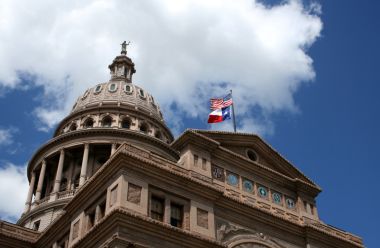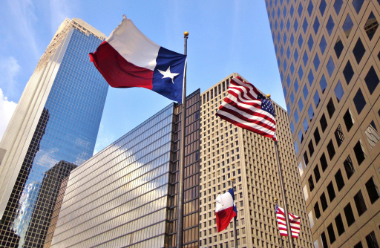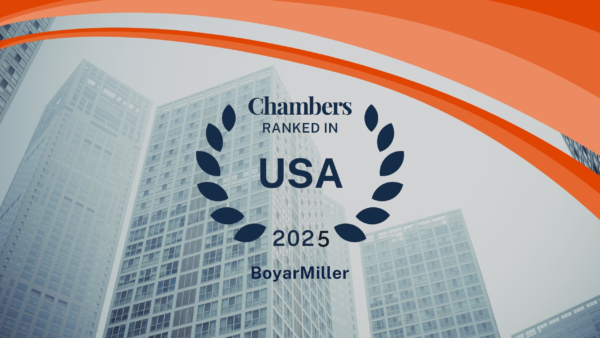With a deep understanding of your business alongside clear and honest communication, we help clients face challenges fearlessly.
Contact us today to learn more about our services and how we can help drive solutions.
UPDATE: Main Street on the Move: Expansion of Main Street Lending Program
May 1, 2020
The Federal Reserve issued new guidance on April 30, 2020, on the Main Street Lending Program, which is a program designed to help small-to-medium-sized businesses that may not be eligible for financial assistance through the various loan programs established by the Small Business Administration. The new guidance updates the original guidance given on the Main Street Lending Program on April 9, 2020, and most notably expands the Main Street Lending Program from two to three lending facilities. Several other terms of the lending facilities have changed as well. One benchmark of the Main Street Lending Program has not changed though: the special purpose vehicle (“SPV”) created to purchase eligible loans is committed to purchasing up to $600 billion in eligible loans, and the Department of the Treasury will use funds appropriated to it in the CARES Act to make a $75 billion equity investment in the SPV. Since so many terms have changed, instead of pointing out the items that have changed, we will give an overview of the entirety of the Main Street Lending Program, including the new lending facility: the Main Street Priority Loan Facility.
WHO ARE ELIGIBLE LENDERS?
Eligible Lenders are the same for all three lending facilities, and they are a U.S. federally insured depository institution (including a bank, savings association, or credit union), a U.S. branch or agency of a foreign bank, a U.S. bank holding company, a U.S. savings and loan holding company, a U.S. intermediate holding company of a foreign banking organization, or a U.S. subsidiary of any of the foregoing.
WHO ARE ELIGIBLE BORROWERS?
The criteria for being an eligible borrower is generally the same under all three lending facilities. Eligible borrowers must:
- be a business organized for profit as a partnership, LLC, corporation, association, trust, cooperative, joint venture with no more than 49% participation by foreign businesses or a tribal business consent;
- be established prior to March 13, 2020;
- not be an “Ineligible Business”, as set forth in 13 CFR 120.110(b)-(j) and (m)-(s) and modified by the regulations published on the Paycheck Protection Program, which is described further in our article HERE;
- have less than 15,000 employees or less than $5 billion in 2019 annual revenues;
- be created or organized in the United States with significant operations in and a majority of employees based in the United States; and
- has not received specific support pursuant to the Coronavirus Economic Stabilization Act of 2020, which provides specific loan stimulus to businesses in particular industries hardest hit by the crisis, such as air carriers.
The Frequently Asked Questions (“FAQs”) state that for purposes of calculating the number of employees and 2019 revenues of a business, the affiliation rules set forth in 13 CFR 121.301(f) will apply, meaning that many private equity-owned businesses will not be eligible for loans under the Main Street Lending Program.
An eligible borrower can only participate in one of the three lending facilities and cannot also participate in the Primary Market Corporate Credit Facility, which is a program designed to support large businesses through the purchase of eligible corporate bonds from such businesses and lending to them through syndicated loans. Also, at this point, non-profit organizations are not currently eligible to receive loans under the Main Street Lending Program; however, the Federal Reserve is evaluating the feasibility of adjusting the eligible criteria and metrics to fit non-profit organizations.
Please note that businesses that have received loans under the Paycheck Protection Program under the CARES Act are eligible to participate in the Main Street Lending Program as long as all other eligibility criteria is met.
UPDATE AND CLARIFICATIONS:
On June 8,2020 the Federal Reserve modified the terms of each lending facility, as shown in the chart below:
WHAT ARE THE REQUIRED BORROWER CERTIFICATIONS?
Under all three lending facilities, the eligible borrower must certify that with regard to the loans or upsized tranche:
- It will refrain from using the proceeds to repay other loan balances, including repayment of debt of equal or lower priority, with the exception of mandatory principal or interest payments that are due. However, we note that the Main Street Priority Lending Program allows a borrower to refinance existing debt owed by the borrower to a lender that is not the eligible lender.
- It will not seek to cancel or reduce any of its outstanding lines of credit with the eligible lender or any other lender.
- It has a reasonable basis to believe that, as of the date of the origination or upsize tranche, it has the ability to meet its financial obligations for at least the next 90 days and does not expect to file for bankruptcy during that time period.
- It will follow certain compensation, stock repurchase, and capital distribution restrictions that apply to direct loan programs under the CARES Act, except that an S Corporation or other pass-through entity may make distributions to the extent reasonably required to cover owners’ tax obligations.
- It is eligible to participate in the applicable lending facility, including in light of the conflicts of interest prohibition in the CARES Act.
The FAQs point out that during the term of any loan under any of the three lending facilities these covenants do not prohibit a borrower from (i) repaying a line of credit, including a credit card, in accordance with the borrower’s normal course of business usage of such line of credit, (ii) taking on and paying additional debt obligations in the normal course of business and on standard terms, including inventory and equipment financing, as long as such debt is secured by newly acquired property and is of equal or lower priority than the eligible loan under the Main Street Lending Program, or (iii) refinancing maturing debt.
WHAT WILL ELIGIBLE LENDERS’ APPROVAL PROCESS ENTAIL?
In connection with their respective underwriting and approval processes, eligible lenders will:
- assess each potential borrower’s financial condition during the application process, including making an assessment of the risk-rating of other loans outstanding between the potential borrower and such lender as follows:
- Main Street New Lending Facility and the Main Street Priority Lending Facility – such outstanding loans must have had an internal risk rating equivalent to a “pass” in the Federal Financial Institutions Examination Council’s supervisory rating system on December 31, 2019; and
- Main Street Expanded Lending Facility – the eligible loan to be upsized must have had an internal risk-rating equivalent to a “pass” in the Federal Financial Institutions Examination Council’s supervisory rating system as of December 31, 2019;
- apply their own underwriting standards in evaluating the financial condition and creditworthiness of a potential borrower; and
- collect the borrower certifications (listed above) at the time of origination of the eligible loan or upsizing, and shall not be required to independently verify the borrower’s certifications or actively monitor ongoing compliance with any covenants of the Main Street Lending Program.
ITEMS OF NOTE
1. The guidance states that borrowers “should make commercially reasonable efforts” to maintain payroll and retain employees during the time the eligible loan is outstanding. The FAQs published by the Federal Reserve indicate that borrowers that have already laid-off or furloughed workers are still eligible to apply, but we anticipate that this subjective standard will lead to many questions and further guidance will be necessary to understand the full implications of this mandate.
2. All three lending facilities under the Main Street Lending Program will cease purchasing participation in eligible loans on September 30, 2020, unless the program is extended.
The Federal Reserve is currently working to create the infrastructure necessary to operationalize the Main Street Lending Program, and we know that borrower will apply for loans through this program through eligible lenders; however, until such time as the Main Street Lending Program becomes operational, we wait for further guidance and the announcement of a date on which applications can be made by borrowers and submitted to lenders.
If your question is not directly addressed in this article, we suggest that you read the extensive list of FAQs published by the Federal Reserve HERE, or you can give us a call.




